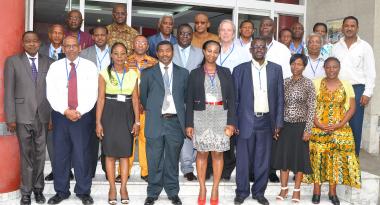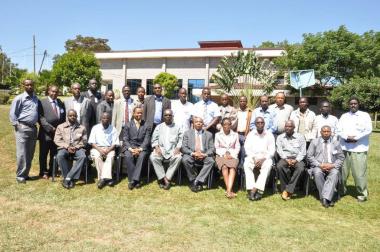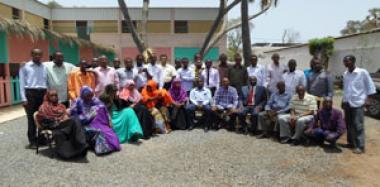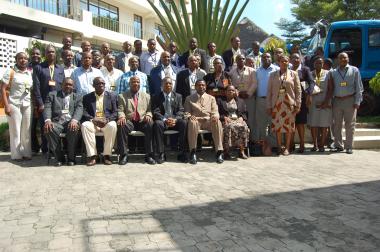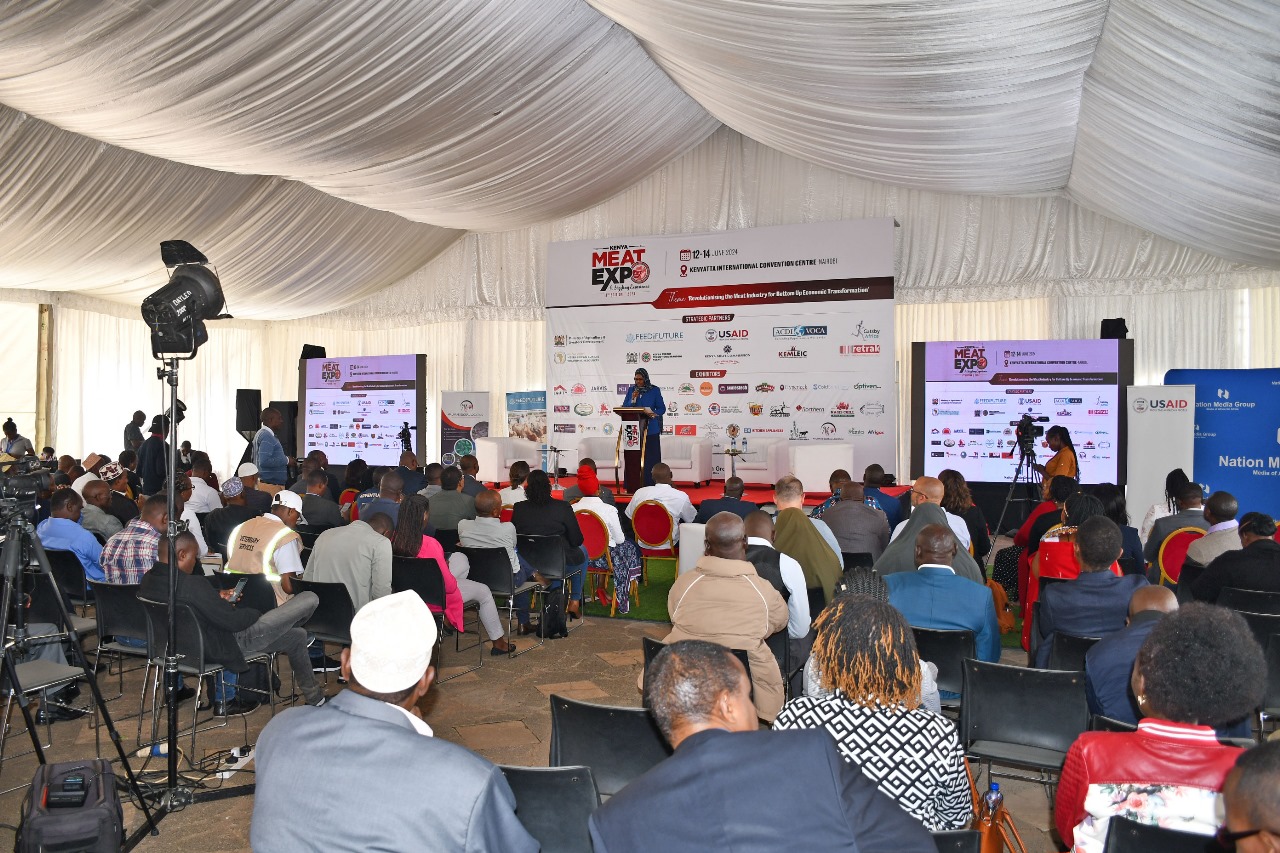 The Kenya Meat Expo 2024 marked a significant milestone in the country's efforts to revolutionize its livestock sector and moreso the meat industry. The third iteration of this event themed: revolutionizing the Meat Industry from the Bottom-Up Economic Transformation Agenda (BETA) highlighted critical discussions on meat safety, industry resilience, feed and fodder resilience as well as the potential that the livestock sector has in terms of job creation, aiming to position Kenya as a leader in the global meat export market.
The Kenya Meat Expo 2024 marked a significant milestone in the country's efforts to revolutionize its livestock sector and moreso the meat industry. The third iteration of this event themed: revolutionizing the Meat Industry from the Bottom-Up Economic Transformation Agenda (BETA) highlighted critical discussions on meat safety, industry resilience, feed and fodder resilience as well as the potential that the livestock sector has in terms of job creation, aiming to position Kenya as a leader in the global meat export market.
The Meat Expo showcased the significant role of the meat industry in Africa's economic development. Dr. Huyam Salih, Director of AU-IBAR in her speech emphasized the sector's importance and its potential to drive the continent's growth under the BETA agenda, which aims to revolutionize the meat industry.
Dr. Salih highlighted that the livestock sector is crucial for achieving economic transformation. She noted, "the meat sub-sector contributes 24.9% to GDP and is the fastest-growing sector, surpassing the traditional food and agriculture sector. Africa possesses one-third of the world's livestock, with Kenya having one of the largest herds on the continent which positions the country strategically as a key player in the sector.”
The demand for animal-sourced foods (ASF) is increasing due to rapid urbanization and a growing affluent middle class. Dr. Salih explained, "ASF consumption in Africa is currently at 12.2 grams per day, which is half the global average of 26 grams per day. Despite this rising demand, there is a significant lack of capacity in domestic production, with the continent importing animal products worth $4 billion each year.”
Critical challenges facing the sector, include low levels of investment and the impact of climate change. Dr. Salih stated, "In 2015, 30 per cent of agricultural spending was allocated to livestock, but this decreased to 12 per cent in 2022," referring to the Comprehensive Africa Agriculture Development Programme (CAADP) and the Biennial Review Report (BRR). These low spending levels contrast with the recommendation of at least 30 per cent by the Livestock Development Strategy for Africa (LISDESA).
Climate change exacerbates these challenges by affecting pasture availability and feed quality, as well as revealing management gaps within the sector. Dr. Salih emphasized the need for increased engagement with women and youth to bridge these gaps and drive innovation in livestock management.
The Resilient African Feed and Fodder Systems (RAFFS) Project and The African Pastoral Markets Development (APMD) Platform Project were highlighted as crucial for advancing these goals. Dr. Salih stated, "Engaging more women and youth in the sector is essential for shaping the future of livestock production in Africa." These projects aim to enhance resilience and sustainability in the meat industry by addressing critical issues such as feed production, animal health, and market access.
Dr. Sarah Ossiya, the RAFFS Project lead noted that the livestock sector requires comprehensive reforms to enhance food and nutrition security. Reports indicate that the Horn of Africa lost approximately 10.5 million livestock due to drought at a cost of over USD 2 billion in the recent drought. However, these figures only represent a fraction of the total losses, as the true economic impact is far greater. “The deteriorating body condition of livestock accounts for about 60 per cent of these losses, severely impacting the sector's contribution to the economy. This has resulted in a catastrophic decline of one-third of Africa's GDP linked to livestock production,” noted Dr. Ossiya.
In Kenya the covid-19 crisis, drought and impacts of climate change led to the closure of 22 out of 60 milk processing units, devastating local economies and resulting in significant job losses. The ripple effects are profound, with numerous livelihoods lost and countless opportunities for economic development wasted. The Biennial Review Report (BRR) further highlights these challenges, indicating that since 2015, Africa has made minimal progress in addressing food and nutrition security.
“Globally, 60 per cent of grain is used for livestock feed, noting the importance of a robust livestock sector for overall food security. Unless we can feed the animals, we can't feed our people. Africa's allocation of arable land for livestock production remains disproportionately low. Globally, two-thirds of arable land is dedicated to livestock, but this is not the case with Africa.” Dr. Ossiya said.
The Principal Secretary, Ministry of Agriculture and Livestock Development, State Department for Livestock Development, Jonathan Mueke says the government seeks to transform Kenya's meat industry by commercializing the sector and increasing its contribution to the economy from its current 12 per cent to a minimum of 20 per cent.
Mr. Mueke who officially opened the Meat Expo noted that the government has plans to enhance the entire value chain, create jobs, develop an export strategy, and meet global demand for three critical areas: quality, quantity, and consistency.
The Kenyan government has adopted a value chain approach that brings together all stakeholders involved in meat production and marketing. The goal is to create a cohesive system that supports growth, job creation, and the development of a viable export plan.
Root-to-Market Strategy
The journey towards commercialization began with a thorough root-to-market strategy. This involved understanding the market size, identifying opportunities, key players, and potential market shares and entry barriers. By comprehensively mapping the industry, the government has identified critical areas for intervention to ensure Kenyan meat products can compete globally.
Kenya has significant livestock resources, with millions of cattle, goats, and sheep. However, the market demands are not fully met. The goal is to produce what the market wants - quality, quantity, and consistency. This requires strategic improvements in production, collaboration with academia, research institutions, government agencies, and semi-autonomous government organizations.
Breeding for Productivity
A key focus is on improving livestock breeds to enhance productivity, particularly in the arid northern regions. This involves developing breeds that mature quickly, are disease-resistant, and require minimal investment in feed. “Efforts by institutions like the Kenya Agricultural Research and Livestock Organization (KAGRIC), academia, the International Livestock Research Institute (ILRI), and breeding associations have resulted in a national breed improvement program. The indigenous Boran breed, renowned for its quality, is being re-marketed as a premium Kenyan product,” noted Mr. Mueke.
Tackling Feed Challenges
The industry is facing challenges, particularly in terms of feed availability. The recent severe drought, the worst in 40 years, led to significant losses, highlighting the importance of a strong feed strategy. To address this issue, a national feed balance sheet has been developed in collaboration with the Food and Agriculture Organization (FAO), the RAFFS Project, and Gatsby.
Further, the government is working to reduce risk for private sector investment by offering loans through the Kenya Development Corporation (KDC) with a ten-year grace period. Investors are encouraged to help address the feed deficit by utilizing large areas of idle and unproductive land for fodder production. Developing a national beef strategy involves converting surplus grass into pellets to mitigate droughts. By addressing post-harvest losses and improving storage capabilities, the sector can ensure a consistent supply of feed.
“Animal health is crucial for a successful meat industry. The government, in collaboration with counties, is implementing a national vaccine program to eradicate Foot-and-Mouth Disease (FMD) in cattle and Peste des Petits Ruminants (PPR) in goats. Supported by the EU and AU-IBAR, this program includes measures for disease control, including vaccinations, tick and worm management, and animal husbandry practices,” says Mr. Mueke.
Legislation plays a vital role in the commercialization of the meat sector. A new livestock bill aims to streamline the industry by establishing a livestock marketing council and enhancing institutions like the Meat Training Institute (AHITI) and the National Beekeeping Institute. The bill promises to position Kenya as a premium livestock market and promote brands for export readiness.
A Livestock Identification and Traceability System (LITS) is being introduced to track disease control, cattle dipping, and vaccinations. This system aims to eliminate cattle rustling and ensure informed decision-making in the industry.
Mueke sees the livestock sector as a means of reducing economic disparity. By commercializing the sector and making it globally competitive, the industry can contribute to Kenya's economic growth. The government’s plan aims to improve breeds, address feed challenges, ensure animal health, and support the sector through legislation and strategic interventions. If successful, Kenya has the potential to become a leading player in the global meat market.
Mr. Evans Makokha the chairperson of the secretariat organising the event emphasized the importance of meat safety, stating that it remains a key discussion point. He highlighted the Expo's role in stimulating the sector to ensure that Kenyan meat can compete internationally. "We need to increase awareness about the safe and quality meat we want to consume," he said, pointing out the necessity for improved pasture and fodder development to boost meat production quality.
Mr. Nicholas Ngahu, representing the Meat and Livestock Exporters Industry Council of Kenya (KAMLEIC), shared their expansion goals. "We are currently pursuing Qatar and aiming to open up markets in China, Indonesia, and Malaysia," he revealed. Ngahu noted that approximately 14,000 heads of livestock were recently slaughtered for export, producing around 150 tonnes of meat and this is supported by eight airlines serving the Middle East market.
Ms. Floice Mukabana, CEO of Kenya Export Promotion and Branding Agency (KEPROBA), discussed potential global market opportunities, predicting that they could reach up to $250 billion USD by 2027. She emphasized Kenya's potential due to its large herds and the African Continental Free Trade Area (AfCFTA) providing preferential market access. She noted that as consumers become more health-conscious, there is a demand for safer meat, which is why KEPROBA is strategically focused on the meat value chain.
Ms. Wambui Mbarire, CEO of Retail Trade Association of Kenya (RETRACK), highlighted the growth of the local market. She said there has been a rise of up to 40 per cent in local meat products and emphasized the need for better sector knowledge and collaboration with retailers. Mbarire also advocated for training meat producers domestically instead of sending them abroad.
Lieutenant Kinuthia of the Kenya Meat Commission stressed the importance of quality livestock for producing quality meat products. He pointed out that basic animal husbandry practices like deworming are causing losses and emphasized the need for consistent quality standards. He also highlighted the challenges posed by seasonal changes and the importance of proper fodder production to mitigate these issues.
Sam Kareithi from Gatsby and Andrew McCowan, Director of Feed the Future USAID, discussed the importance of strong partnerships to support production and improve market dynamics. McCowan stated that the meat market is projected to grow by 28% and noted USAID's support for the livestock sector through significant investments and partnerships with over 50 producer cooperatives.
Steve Gitagama, CEO of the Kenya Meat Expo, emphasized the critical role of the sector in the economy. He said the sector supports about 10 million Kenyans and contributes 12% to GDP, highlighting its potential to support up to 20% of GDP with proper utilization and by addressing challenges like climate change.
The expo also featured a panel discussion with key industry leaders from Bill and Melinda Gates Foundation, AU-IBAR, USAID and Gatsby international. They discussed innovations in the sector, the importance of private sector engagement, and the need for better disaster preparedness and feed management.
The Meat Expo 2024 runs from 12th-14th June at the KICC. Sector players highlighted the need for collaborative efforts and strategic initiatives necessary to revolutionize Kenya's meat industry, ensuring its competitiveness and resilience in the global market.


